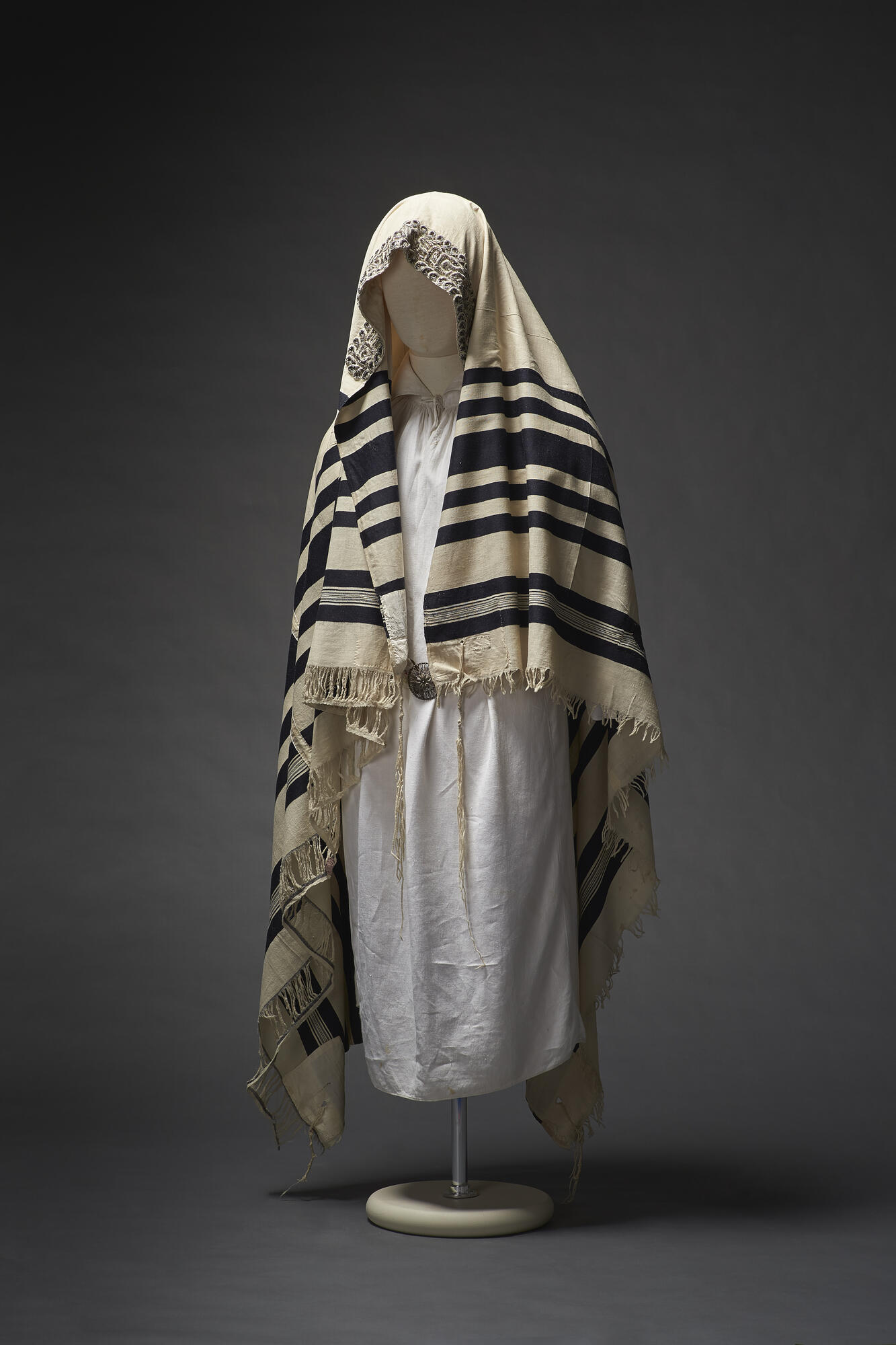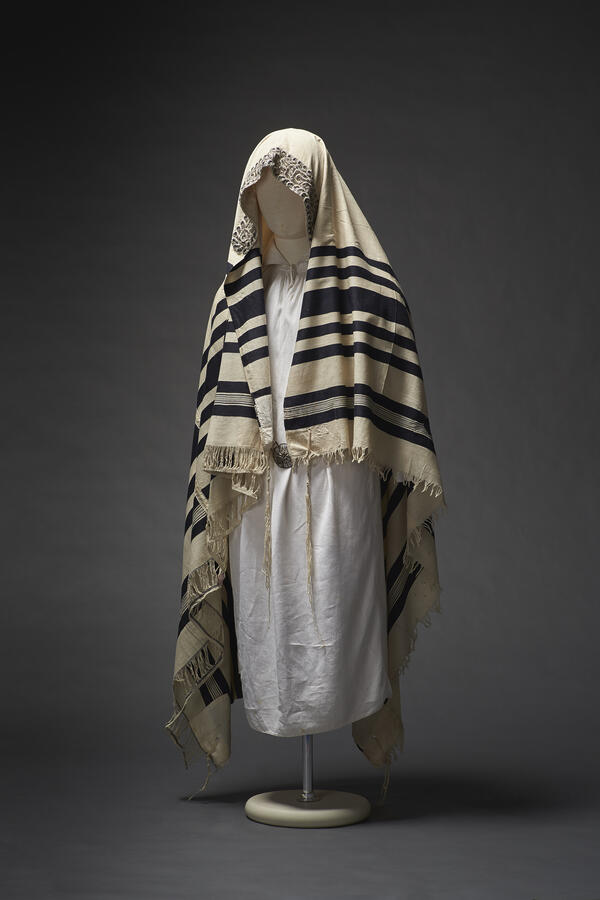A tallit is a prayer shawl that must be worn by all Jewish men from the age of 13, the age of religious adulthood. From then on, a young man is responsible for his own actions, observes ethical and religious norms and participates in the rituals of the Jewish community. For children under 13, some communities sew children’s tallits; they have no religious significance, but introduce boys to traditions.
In the Russian Empire, Ashkenazi Jews first wore a tallit for a wedding. It was usually made of sheep’s wool, linen, cotton and silk. According to the canons, the minimum length of fabric for a tallit should be such as to cover a child able to walk.
The tallit was woven from undyed material, with dark stripes added afterwards. For a festive tallit, a silver braid was sewn on the collar. Such gilt patches were called “atara”, which means a “crown”. The everyday tallit was devoid of ornamentation, with only a patch to define the outer and inner sides.
Since the old days, Jewish have worn a tallit under their outer garments. It can be covered with a shirt or coat, but it is strictly forbidden to tuck it into trousers. Tzitzit, braided fringes with knots tied according to the Talmudic rules, are attached to the four corners of the tallit. During prayer, the Jews hold the tzitzit in their hands and finger over the knots. “Tzitzit” in Hebrew means a “hair lock” or “scalp lock”. The Bible says,
In the Russian Empire, Ashkenazi Jews first wore a tallit for a wedding. It was usually made of sheep’s wool, linen, cotton and silk. According to the canons, the minimum length of fabric for a tallit should be such as to cover a child able to walk.
The tallit was woven from undyed material, with dark stripes added afterwards. For a festive tallit, a silver braid was sewn on the collar. Such gilt patches were called “atara”, which means a “crown”. The everyday tallit was devoid of ornamentation, with only a patch to define the outer and inner sides.
Since the old days, Jewish have worn a tallit under their outer garments. It can be covered with a shirt or coat, but it is strictly forbidden to tuck it into trousers. Tzitzit, braided fringes with knots tied according to the Talmudic rules, are attached to the four corners of the tallit. During prayer, the Jews hold the tzitzit in their hands and finger over the knots. “Tzitzit” in Hebrew means a “hair lock” or “scalp lock”. The Bible says,



